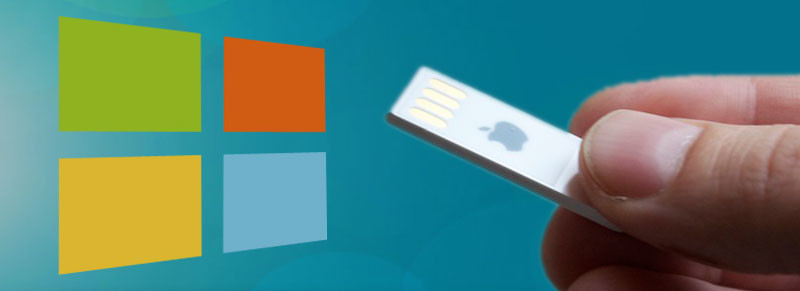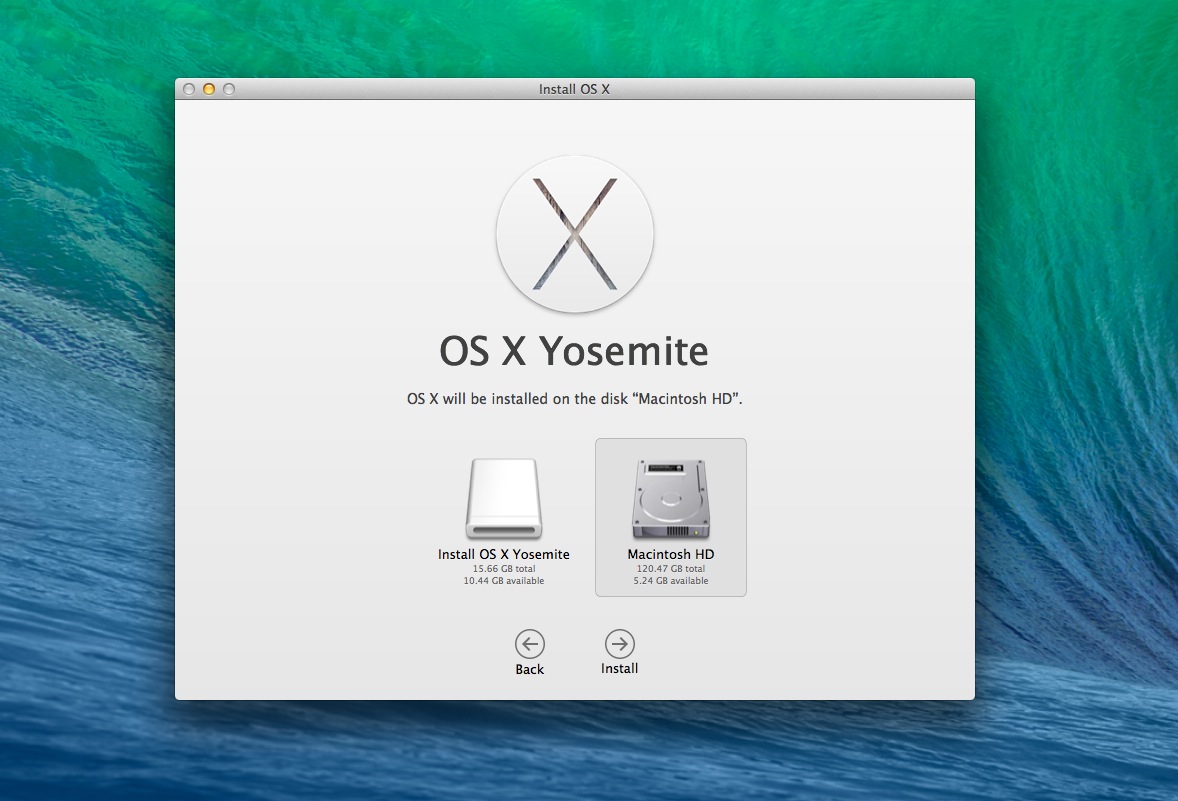Creating a bootable USB drive of OS X Yosemite 10.10 if you want to save it on a external drive for future usage or just want to install it on multiple Mac computers. To make OS X Yosemite bootable USB installer drive, there are few requirements. Lets see what are those.
Note: This guide to make installer USB drive is for OS X Yosemite Developer Preview
See also: Dual Boot OS X Yosemite and Mavericks
Jun 08, 2014 Creating a bootable USB drive of OS X Yosemite 10.10 if you want to save it on a external drive for future usage or just want to install it on multiple Mac computers. To make OS X Yosemite bootable USB installer drive, there are few requirements. Lets see what are those. Note: This guide to. Update 09/2015: For help creating a bootable USB install drive for OS X El Capitan, click here. Apple released the latest and greatest Mac operating system last month in the form of OS X Yosemite. And like the previous versions of OS X dating back to OS X 10.7, Yosemite is only available for install via download from the Mac App Store.
Make OS X Yosemite Bootable USB
Requirements
- You must have an external USB drive or storage media with capacity of at-least 8GB (Save data from it because we are going to format it).
- OS X Yosemite installer downloaded (You can join OS X Beta program)
Prepare USB drive for OS X Yosemite
Open Disk Utility from “Applications” > “Utilities” or press “cmd+space” keys form keyboard to find “Disk Utility”.
Plug the external USB drive into Mac (make sure you save your stuff from it). Once you attached the USB drive, it will shown on the left panel of Disk Utility.
Select the drive and then do the following steps to create a single partition that is required to make USB installer drive for OS X Yosemite 10.10.
Click on “Partition Layout” drop-down menu and select “1 Partition” option from it.
Then enter the Partition information Name: ”osxyosemite”, Format: “Mac OS Extended (Journaled)”.
Click the “Options” button to select the partition scheme, so select “GUID Partition Table” option and click OK button.
To complete the creating partition process hit the “Apply” button and then “Partition” button. This will take some time to format and making USB drive as a 1 partition. Once done, you will notice a new drive name will be displayed on the left side, the name that you given in the partition information. Now close the Disk Utility tool.
Show hidden files
Showing hidden files is required, because there are few hidden files in the OS X Yosemite installer package that you need to unhide first to write them on bootable USB drive.
Open Mac “Terminal” command line: press cmd+space keys and type Terminal in the spotlight, click the Terminal from search results or just open the Terminal from Applications > Utilities > Terminal.
Type the following two commands one by one:
defaults write com.apple.finder AppleShowAllFiles YES
Killall Finder
First command is going to show hidden files and the second one is to restart the Finder so we can see the instant effect of first command. Close the Terminal.

Open Applications, here you will see your downloaded OS X Yosemite file “Install OS X 10.10”. Cmd+click on it to view the menu, select “Show Package Contents”.
Open “Contents” > “SharedSupport” folder and here you will see “InstallESD.dmg” file, double click to open the file and OS X may starts verifying this file so let the verification process finished.
After that you will see a folder with the following content in it, “BaseSystem.dmg” is the file that we need and it was hidden, so now you know that why we show the hidden files in above steps.
Open the Disk Utility again from “Applications” > “Utilities” > “Disk Utility” or by using Spotlight search.
Load the “BaseSystem.dmg” file into the Disk Utility, right-click on the file and choose “Open With” > “Disk Utility” option. After doing that open the Disk Utility and you will see the file “BaseSystem.dmg” is loaded in the Disk Utility on the left side.
Restore Disk Image
Now we are going to restore “BaseSystem.dmg” disk image on the USB drive.
Select your USB partition that we created in previous first steps, then click the Restore tab.
Under Restore tab there are two fields, Source and Destination.
Click and drag the “BaseSystem.dmg” to Source field and “osxyosemite” usb drive to Destination filed, see screenshot below to get more idea. When done hit the Restore button and you need to confirm “Are you sure you want to replace the content on USB drive with the content of disk image” so click the Erase button to confirm, after that you may need to enter the administrator password. Restoring disk image is time taking process so be patient.
Once the restoring disk image process is finished you will see a folder like this. Here, open the “System” > “Installation” folders and move the Packages file to trash.
Copy the “Packages” folder from the folder where the “BaseSystem.dmg” exist. and paste it into the Installation folder that you just opened in previous step.
Hide the system files again using this commanddefaults write com.apple.finder AppleShowAllFiles NO
How to Boot from USB Drive
You must know the system requirements of OS X Yosemite before installing it, If your system to capable to run this OS X version 10.10 then Shutdown your Mac, plug the OS X Yosemite Bootable USB into Mac. Press the power button again to turn it On and then hold the Alt or Option key from keyboard, when you see this screen release the button. Double click on the USB drive to boot from it.

Congratulations! you successfully perform all steps to make bootable USB drive to install OS X Yosemite on more that one Mac computers without worried of downloading it on each computer separately, you will saved lot of bandwidth and time as well. Thanks for reading if you have any problem we are here to help you just write your problem below in comments box.
Related Content
I will be the first to admit that I prefer Windows over Mac OS any day. Besides being a slight Microsoft fanboy, I do prefer Windows because it meets all of my software and gaming needs, but I digress. In any case, there are still some unfortunate situations when I need to have access to Mac OS.
Luckily, I’ll show you an easy way on how to install Mac OS X Yosemite on any pc, regardless of the hardware that you currently have installed (even if it is an AMD CPU). Doing this will require a specially modified version of Yosemite called Yosemite-zone.dmg. With a quick Google search, you should be able to find it. As far as performance, I did not encounter any issues. It ran surprisingly smooth even before setting up Multi-beast. Of course, ymmv.
What You Will Need:
- Yosemite-zone.dmg
- Transmac (Free 15day Trial)
- 8GB USB
- A Spare Hard-drive
Step 1: Format GPT
The first thing that you need to do is restore the Yosemite-zone.dmg image to the USB. Open transmac, and right click on your USB. First, select the option to format for Mac (this will change the boot record from MBR to GPT). Once it completes, select the option to restore the disk image to the USB. It will take about 10 minutes to restore the image. Finally, right click the hard drive_ _that you want to install Mac OS to choose the option to format for Mac. Keep in mind that you will need a separate hard drive for the Mac OS installation. You will not be able to solely format one partition.
Step 2: Bios
Before you boot from your USB, go into your bios settings. This part can get a little complicated depending on your hardware. Make sure that you have secure boot disabled and Vt-D. Also, when you choose boot devices, make sure your USB is not booting with Eefi. Fortunately, I did not have to change anything and kept my bios to the default settings.
Step 3: Boot from USB
Yosemite Iso
Now boot from the USB. You should see a boot loader screen that will prompt you with what operating system/hard drive to boot with. At the bottom of the screen, you can enter boot flags. If you are using an AMD CPU type in “/amd”, or “/amd32” or “/amd64”. If you run intro trouble during installation, check out these other boot flags that you can use. If you don’t need to type in anything, simply choose Yosemite from the selection window.
Step 4: Setup
Install Yosemite Dmg From Usb Windows 10
From this point, you will be taken through the standard Mac OS setup. If you already set up your drive in Windows using TransMac, than you can just skip to the installation. If not, make sure to go into Disk Utility and format your desired hard drive. The installation should take about 16 minutes. Once it’s done it will reboot your PC. Remember to reboot from the hard drive Mac OS is installed on (if that fails, try rebooting from the USB again).
Install Yosemite Dmg From Usb Drive
Step 5: The Final Steps
Yosemite Dmg Torrent
From this point, you can go through the normal setup process for Mac OS. As far as compatibility, all my existing hardware worked fine with Mac OS. This included speakers and internet. Of course, you can always install MultiBeast to add any post secondary drivers and optimizations.